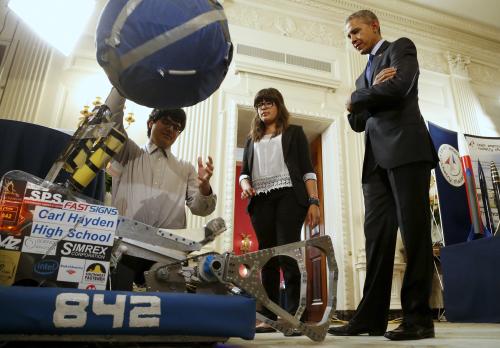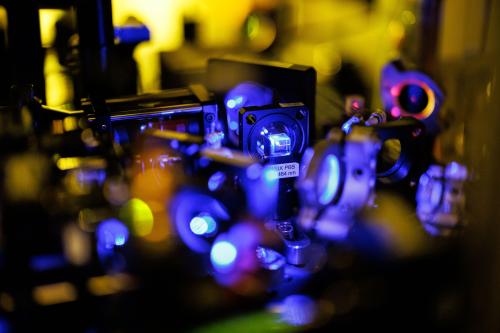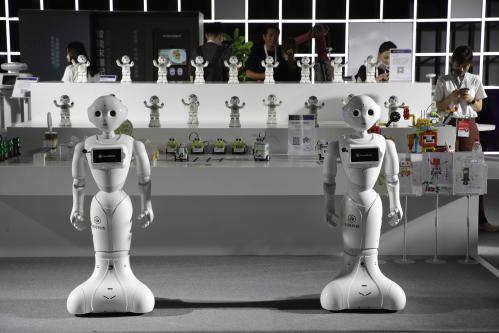The MIT Technology Review has released their list of 10 Breakthrough Technologies for 2017. The editors chose technologies ranging from advances in genetic treatments or improved AI technology. Some may have immediate effects on the world today while others will take longer to make an impact. Previous lists include smart wind and solar power, liquid batteries, cloud streaming, and supergrids. The 2017 list does not disappoint.
Reversing Paralysis
Researchers have begun using brain-reading technology allowing those with paralysis to move limbs once again. An electronic implant in the brain connects to electrical stimulators located on the body to create a “neural bypass”. Not just for paralysis, this technology is also being tested with other diseases. While progress is slow, these advances would allow patients to regain control of their bodies.
Self-Driving Trucks
Can computers drive better than humans can? We are about to find out with the advent of self-driving trucks. Driverless trucks could reduce wind drag and save on fuel by coordinating movements together over long distances, and could allow drivers to complete routes faster by driving part of the route. The technology for these vehicles includes a LIDAR system, which monitors the surrounding road space. Trucks that drive themselves also solve a shortage of workers in the U.S. trucking industry. In the future, expect to see a more automated transportation network with driverless vehicles leading the way.
Paying with Your Face
A large camera takes a picture of your face; you now have access to the entire building. Rather than key cards, face-reading technology could transform security, travel and many other industries. In China, secure financial transactions now utilize facial recognition technology. The new technology for facial recognition uses artificial intelligence to identify a person through multiple facial features. This technology removes some anonymity and some could see it as an invasion of privacy.
Practical Quantum Computers
Imagine a computer that could rewrite encryptions, or accelerate pharmaceutical research. That dream is close to fruition with new quantum computers that have more qubits, the basic units of quantum information. Qubits require ideal conditions to function properly, but new technology reduces the computational power needed to correct errors caused by physical disturbances. In a few years, quantum computers could be on the commercial market for anyone to use. In under ten years, we could have quantum computers that compute equations that are hard to fathom right now.
The 360-Degree Selfie
Anyone can buy a 360-degree camera today and shoot video footage with it. The 360-degree format could become the new normal for news footage, helping viewers visualize events and stories. The technology is possible because of energy-efficient chips, first used in smartphones, which allow the devices to generate more horsepower and heat. Because these cameras lack viewfinders and displays, they connect to apps wirelessly, and make live-streaming 360-degree images possible. With this technology, we can always see in 360 degrees.
Hot Solar Cells
Solar panels today are more efficient than their predecessors, but they still absorb only a fraction of sunlight. The hot solar cell solves that problem by converting sunlight into heat and then back to light. In this approach, an “absorber-emitter” absorbs light, converts it to heat, and funnels it to solar cells. This system could even allow energy to be stored for later use. In the future, this system could deliver continuous power even when the sun isn’t shining, an improvement on today’s solar panels.
Gene Therapy 2.0
Is it possible to deliver healthy genes into patients who need them? Gene therapies for hereditary diseases are now on the market in Europe, and could come soon to the U.S. The success of these gene therapies increased when researchers began using viruses that are more efficient at transporting new genetic materials. Gene therapy can even treat diseases that involve multiple genes. Gene therapy treatment may seem rare now, but will become more common in the near future.
The Cell Atlas
The Cell Atlas is biology’s ambitious project of individually mapping each of the human body’s 37.2 trillion cells. To accomplish this, international groups of scientists have been assigning molecular signatures to each cell and zip codes to each cell type. Researchers are using three different techniques to categorize cells. The first involves cracking open cells to study them, the second uses sequencing machines to decode cells, and the third involves labeling each type of cell with specific zip codes based on the organ or tissue. The future of mapping could well be the human body.
Botnets of Things
Botnets are centralized systems that gain control of internet-connected devices to launch cyberattacks. Although they have been around for at least a decade, the problem is getting worse with so many devices that have little to no cybersecurity measures. Botnets can evade spam filters, create click fraud, and launch denial-of-service attacks. Once a botnet is spotted, its command-and-control center can be attacked and rendered ineffective. In the coming years, botnet trends favor the attacker, and more botnet attacks will be coming for internet users.
Reinforcement Learning
Practice makes perfect, even for robots. Reinforcement learning can allow artificial intelligence to solve problems it has not seen before. The concept works with a large neural network, trained to recognize patterns in data. The computer learns what data is right, and what is wrong, and continually improves itself. A computer using this technology beat one of the best players in the world at the game Go. Reinforcement learning could be moving toward its most important tests in the near future, with its use in self-driving cars and other technologies.
Claire Meczkowski contributed to this post.






Commentary
Ten innovations that could change the world
April 6, 2017